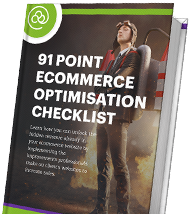If you are planning on setting up an online store, or even contemplating the addition of a shop to your current website, then you are going to need a payment gateway. You do not necessarily have to have one, but it is a better idea in the long run.
By using a gateway, you will be able to keep your and your customer’s finances secure at all times. Gateways are also very helpful for dealing with a fraud check along with other administrative issues that may arise.
Finding the right payment gateway for you, however, could be a difficult task. Right now, Realex and PayPal are the two main frontrunners in the payment gateway world, with both of them having attractive sides.
To help you pick which gateway is best for you and your site, we are going to take a look at the costs of running a Realex or PayPal gateway and compare their features to see which one is best suited for your website.
How Much They Cost To Implement
In order to implement a payment gateway, you have to code it into your website. Once you have done that, it will be able to process credit and debit card payments for you.
In this particular area, PayPal is the clear winner. The main reason for this is that PayPal is a substantially bigger company than Realex, which means that you can integrate PayPal onto a website easily.
If you are planning on adding some form of shopping cart software, then you will probably find that PayPal is already included in that package. This is because PayPal is available through a wide range of third-party services and software.
Even if you have a smaller website, the implementation process is very simple. PayPal offers you the ability to simply copy and paste their ‘buy now’ buttons onto your website, so then they are there straight away and are ready to go.
When you are looking for a shopping cart or online shopping software and services, it could be worth your time to check if PayPal implementation is included. This would save you a lot of time and indeed a lot of money.
When it comes to Realex, the whole implementation process is a lot more complicated. It is so complicated in fact that you will probably need to hire a web developer in order to implement it correctly into your website, which will already have given you a cost you could have avoided with PayPal.
Realex, however, does now have a Vendorshop feature, which essentially means that it can be used through Facebook. This is a really cool feature that will be very appealing for some people, but it may be unsatisfactory for some people.
If you are able to code yourself, then you may be able to implement Realex by yourself. You will however need to make sure that you are up-to-date with all the recent changes to coding, otherwise, you could end up with a load of error messages and broken codes.
If you want to play it safe, then you will need to hire a developer. This means that in terms of being cost-effective, Realex will have already cost you a potentially large sum of money before you have even started using it properly.
How Much They Charge For Transactions
When you have your payment gateway installed on your website, you will then be able to accept credit and debit card payments. Naturally, when you are doing this, both PayPal and Realex will want some form of remuneration based on how much money you are earning.
While PayPal was the clear winner when it came to the implementation process, it is very much a different story when it comes to the price of transactions. PayPal charges you based on the amount of money that you earn using their payment services.
For example, if you are earning around €2,500 per month, PayPal will want 3.4% of your income. If you’re earning €10,000 per month, then they will want 2.9%. PayPal does offer a sliding scale option, but this is something that has to be earned. You can only have the sliding scale if you have been using PayPal on your website for 90 days and you have a good reputation with them.
While it may not seem like such a bad deal with PayPal, Realex has a transaction system that may be more appealing to you, depending on your situation. Instead of charging you for the amount of money that you earn, Realex charges you for the number of transactions you make each month, regardless of their price. They charge you €29 per month for your first 350 transactions. After that, they charge you an additional €0.12 per transaction after you’ve reached 350 on the month.
This means that if you are expecting to complete several large transactions a month but don’t expect to go over 350, Realex will only take €29 from you. If you have PayPal, then they could take a substantially bigger chunk of your earnings.
The Verdict
Even though Realex is a very difficult payment gateway to actually implement onto your website, it does have quite an appealing transaction costs system. The fact that your transactions can be of any size and it will not affect how much you pay them is a very appealing prospect, especially if you are only expecting to do a few sales a month that have quite a high price tag.
Having said that, the transaction costs system may not be enough to put you off the idea of having PayPal. While they may charge you more, to begin with, there is always the prospect of having a sliding scale of charges when you are bringing in more money.
It is also very easy to implement onto the site, so you won’t have to hire a developer like you would with Realex. While Realex does have its appealing sides, PayPal does seem like the best overall choice.




